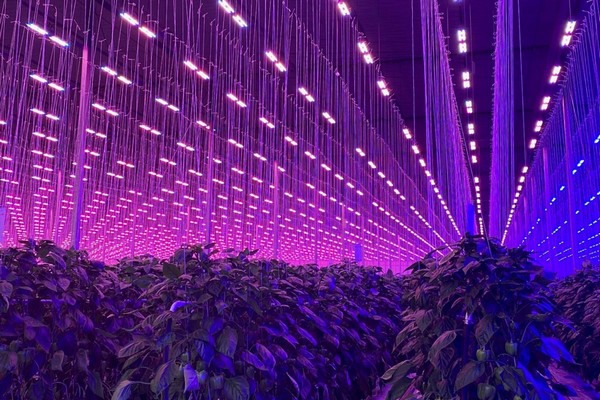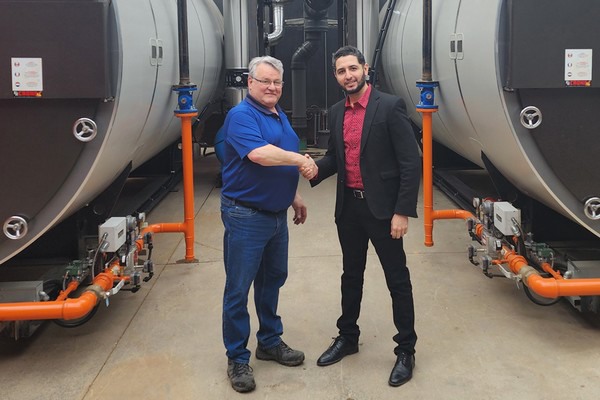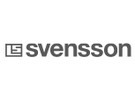Growers in Leamington and other regions of Ontario can now benefit from incentives for light abatement screens that previously didn't qualify under the Enbridge Gas Agriculture Custom Incentive Program.
Following the introduction of a new light abatement base case, customers of Enbridge Gas who wish to install abatement screens, such as Svensson's Obscura 9950 FR W, will now qualify for the company's standard $0.10c/cubic metre (m3) of natural gas saved incentive. A "base case" is the current standard for a product or technology that is used to determine if a new product is more energy-efficient.
 Light abatement curtains, such as Svensson's Obscura 9950 FR W, are now eligible for funding support under the Enbridge Gas Agricultural Custom Incentive Program. Photo courtesy of Allegro Acres / Gene Ingratta.
Light abatement curtains, such as Svensson's Obscura 9950 FR W, are now eligible for funding support under the Enbridge Gas Agricultural Custom Incentive Program. Photo courtesy of Allegro Acres / Gene Ingratta.
However, if growers apply by July 1, 2024, they can receive a full $0.20c/m3 incentive, or $0.15c/m3 by Aug. 19, 2024. Each application carries a new, higher maximum incentive of $250,000, up from the $200,000 offered last year.
Led by Haris Ahmadzai, Enbridge Gas' team of greenhouse energy solutions advisors saw an opportunity to enable growers to benefit from their savings budget.
Enbridge Gas has assembled a team of licensed engineers who are available to work with growers to make their operations more energy efficient."By collaborating with Enbridge Gas engineers, growers can benefit from faster payback periods, lower operating costs, better temperature modulation, and increased natural gas savings."
Enbridge Gas worked closely with Svensson to determine the energy savings potential that light abatement screens would have in a greenhouse operation.
At Svensson, Canadian Sales Manager Dustin Mater says the initiative involved a year-long effort of Svensson's North American climate consultants and marketing team, Enbridge Gas engineers, and the Svensson research and development team in Kinna, Sweden.
"Until now, growers had very limited options when it came to mitigating light abatement regulations. Going forward, they are able to tap into funding support as a result of Enbridge Gas broadening their incentive program to include light abatement screens, including Svensson's Obscura 9950 FR W," says Mater.
With these changes, growers can make an active choice between two screen alternatives and be rewarded for making the more energy efficient choice.
 Haris Ahmadzai (pictured on the right), Supervisor, Energy Conservation for Agriculture Market/Ontario at Enbridge Gas leads a team of licensed engineers who collaborate with growers everyday to improve energy-efficiency in their greenhouse. Jay Colasanti (pictured on the left) is owner of Lakeshore Veggies, who is also an advocate of energy curtain installs and Enbridge Gas's conservation program.
Haris Ahmadzai (pictured on the right), Supervisor, Energy Conservation for Agriculture Market/Ontario at Enbridge Gas leads a team of licensed engineers who collaborate with growers everyday to improve energy-efficiency in their greenhouse. Jay Colasanti (pictured on the left) is owner of Lakeshore Veggies, who is also an advocate of energy curtain installs and Enbridge Gas's conservation program.
"Growers can now choose between a screen offering 35% energy savings, or instead, opt for a screen that offers higher energy savings value," explains Ahmadzai.
In recent years, Leamington, home to the largest number of Ontario's greenhouses, has been increasing pressure on growers to limit light pollution. In 2023, the Canadian Broadcasting Corporation reported that the municipality had sought eighty-eight orders against greenhouse operators to enforce their by-laws, which call for lights out between 5pm and 8am or use fully closed blackout screens.
Local authorities have purchased enforcement drones, with Leamington Mayor Hilda MacDonald warning last year that though fines were initially low for light pollution infractions, higher fines would be triggered for failure to comply with court orders.
"We see this change to our incentive program as a win, win, win," says Ahmadzai.
"It's a win for the growers because they get a more energy-efficient operation at a lower investment cost. The community wins because it can help support local growers in becoming more sustainable. And we win because we can fulfill our energy efficiency targets and help our customers."
For more information:
Ludvig Svensson
[email protected]
www.ludvigsvensson.com
